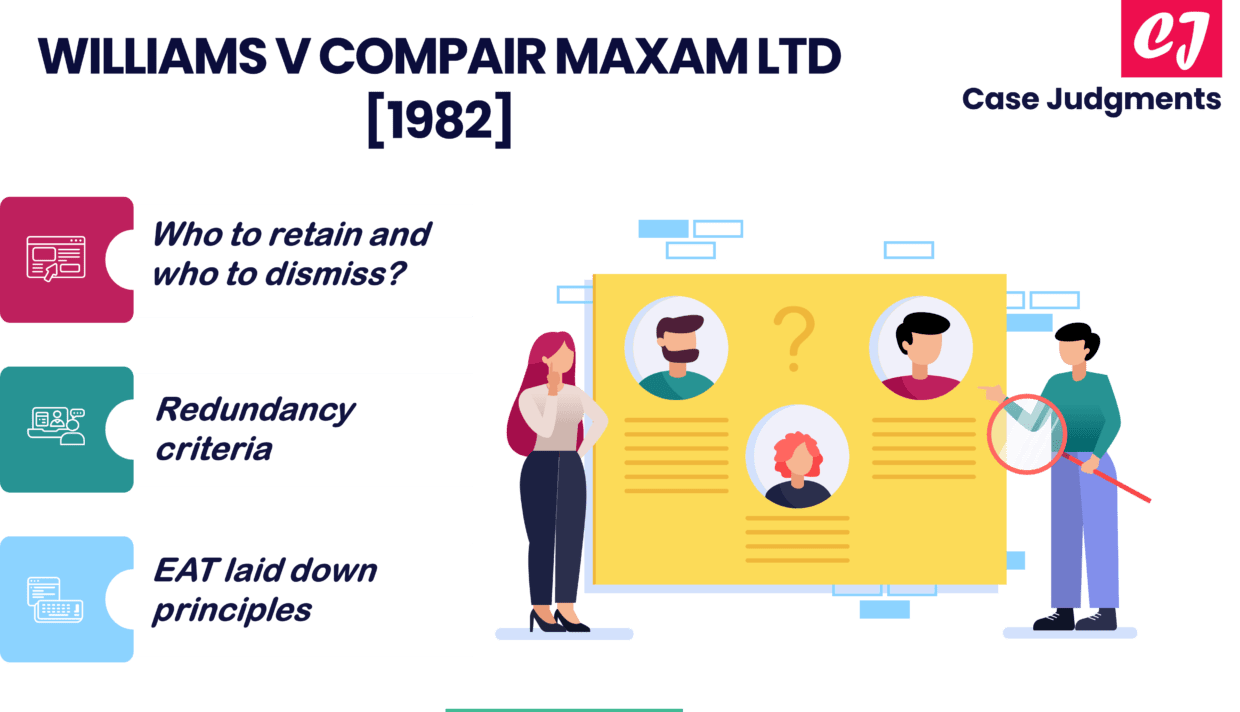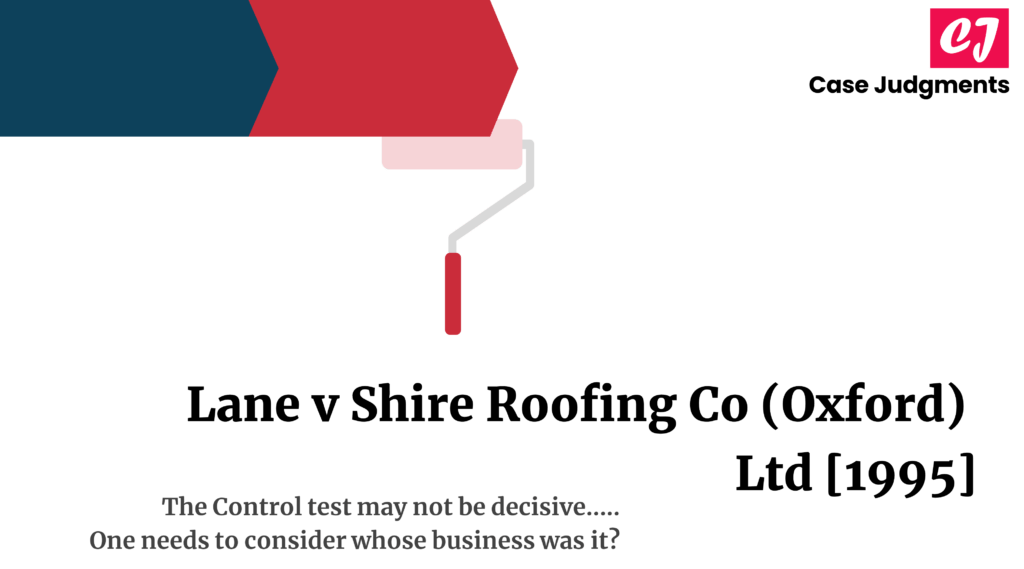
Williams v Compair Maxam Ltd [1982]: Facts and Principles
Case name & citation: Williams v Compair Maxam Ltd [1982] IRLR 83; [1982] ICR 156
Court and jurisdiction: Employment Appeal Tribunal, England and Wales
Decided on: 22 January 1982
The learned judge: Browne-Wilkinson J
Area of law: Redundancy; unfair dismissal
What is the case about?
When an employer is contemplating having to lay off employees, he or she cannot cherry-pick the employees they wish to retain. Instead, they must have appropriate redundancy criteria from which to select the employees who are at risk of being made redundant or laid off. This requirement for redundancy criteria was established in Williams v Compair Maxam Ltd.
Case facts (Williams v Compair Maxam Ltd)
In this case, Compair Maxam Ltd was experiencing a drop in business and recognized the need to implement cost-cutting measures. Its departmental managers decided to select a team of core staff members who they deemed necessary to retain to ensure the continued viability of the business. They did not have any particular criteria for redundancy and instead chose based on personal preference; the Union was not consulted at any point. As a consequence of this, the remaining staff members were dismissed on the grounds of redundancy.
After that, a few of the employees attempted to file claims for unfair dismissal. They were unsuccessful at the tribunal, which found that the managers’ preference was a reasonable way of doing the job. They filed an appeal against this on the grounds that it was unfair, and their appeal was ultimately successful. It was held by EAT that there was an error of law when the tribunal reached the conclusion and that the dismissal selection was unfair.
The principles of redundancy
In the given case of Williams v Compair Maxam Ltd, the Employment Appeal Tribunal (EAT) outlined some guidelines that a reasonable employer should adhere to in the event that they intend to dismiss an employee on the basis of redundancy. It was emphasized by the EAT that these were not legal precepts but rather standards of conduct. They served as important guidance on the selection of employees for redundancy.
These principles are:
1. Notice of impending redundancies:
The employer would do their best to provide employees and their representatives with as much advanced notice as possible when there was going to be a redundancy.This will enable the union and employees who may be affected to take early steps to inform themselves of the relevant facts, consider the possibility of alternative solutions, and, if necessary, find alternative employment either within the undertaking or elsewhere.
2. Consultation with the union:
The employer will have a discussion with the union about the most effective ways by which the desired management result can be accomplished in a way that is fair to the employees and causes them as little hardship as possible. In particular, the employer would consult with employee representatives to establish selection criteria.
3. Objective criteria:
The selection criteria would be based, as much as possible, not on the personal opinion of the person making the selection, but on objective criteria. That is, the criteria should be such that it can be judged against things such as attendance record, efficiency at the job, experience, or length of service.
4. Selection based on criteria:
The employer would make every effort to ensure that the selection is made fairly based on these criteria. And it will take into account any representations or suggestions that the union may make regarding the selection.
5. Alternative employment:
Instead of dismissing the employees, the employer will look into providing them with alternate employment opportunities. He would see whether he could offer alternative employment.
List of references:
- https://www.learnwithunite.org/assets/Uploads/Employment-Law-Eighth-Edition-v2.pdf
- https://assets.publishing.service.gov.uk/media/608a57add3bf7f01329419db/Mr_A_Hatch_v_H2M_Engineering_Limited_2604018_2020_Final.pdf
- https://www.doihaveacase.co.uk/compair-maxamredundancy-criteria/
You might also like:
More from labour law:

